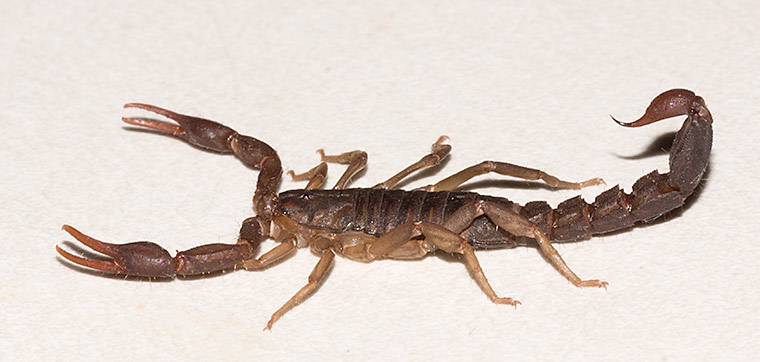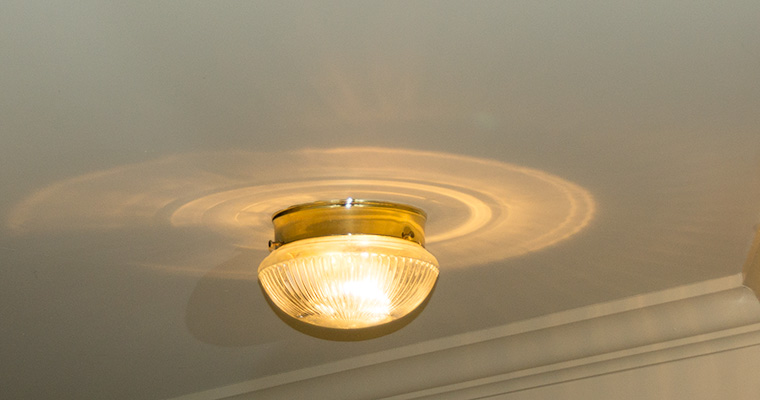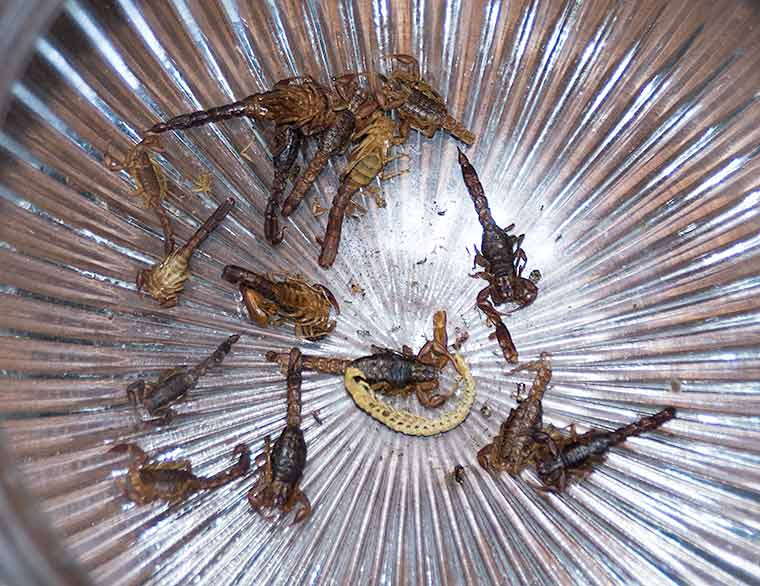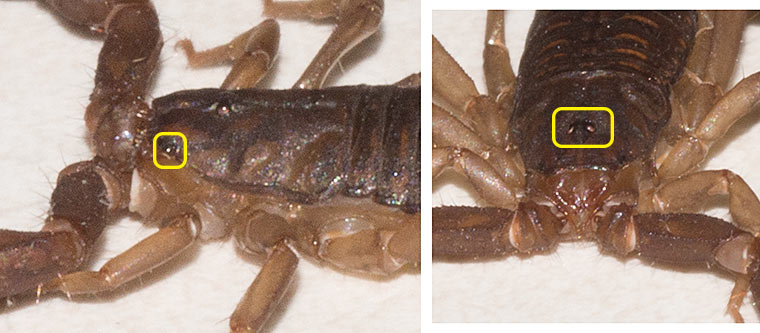Every Fall our house is invaded by these little Southern Devil Scorpions (Vaejovis carolinianus) that are looking for a warm place to spend the winter. (We have white carpet so they are easy to spot.) This is the only native scorpion species in our area, although there is another species (Centruroides hentzi, the Hentz Striped Scorpion) in the southern part of Georgia. Southern Devil Scorpions reach a maximum size of only about 2 inches.
In addition to gaining entrance by crawling under a door or any other small gap, the scorpions enter our house through the attic. The first photograph below shows one of the ceiling light fixtures in our hall. I don’t clean these out as often as I should, but periodically the debris inside the globe of the light becomes noticeable. The second photograph below shows what sort of debris accumulates inside the light globe…15 scorpions and a caterpillar in this case. These scorpions could only have gotten into the light by climbing down from the attic through the hole made to accommodate the wires. Unfortunately for them, it was a dead end (literally).
Southern Devil Scorpions will sting with that wicked looking stinger on their tail. Their sting has about the same level of potency as a bee sting. However, those who are allergic to insect stings might be in danger from an allergic response. Southern Devil Scorpions feed on a wide range of small animals including crickets, spiders, caterpillars, and centipedes.
Scorpions have two to five pairs of eyes. In my photographs I can see two axial eyes on top of its head area (right hand photograph), and two lateral eyes, one on each side of the head (indicated by the yellow outlines I put in the photographs). These are simple eyes, not specialized compound eyes that one finds in many insects.




